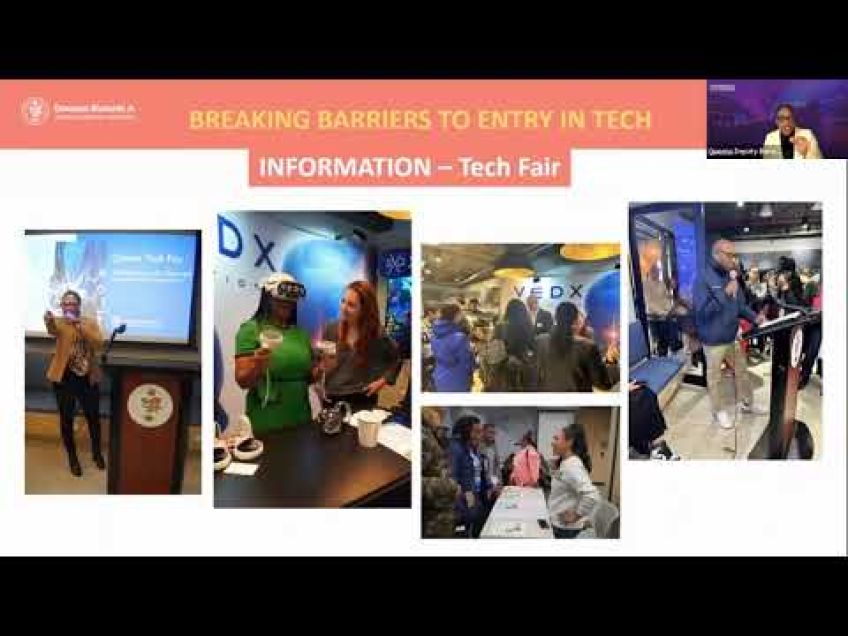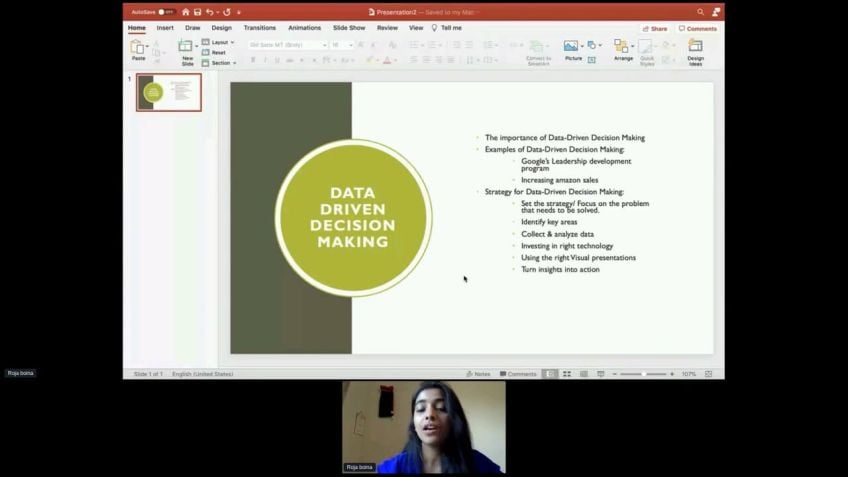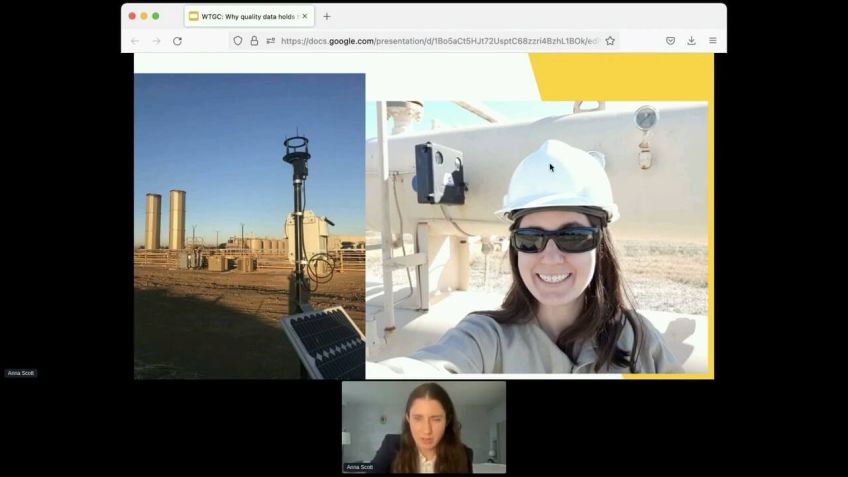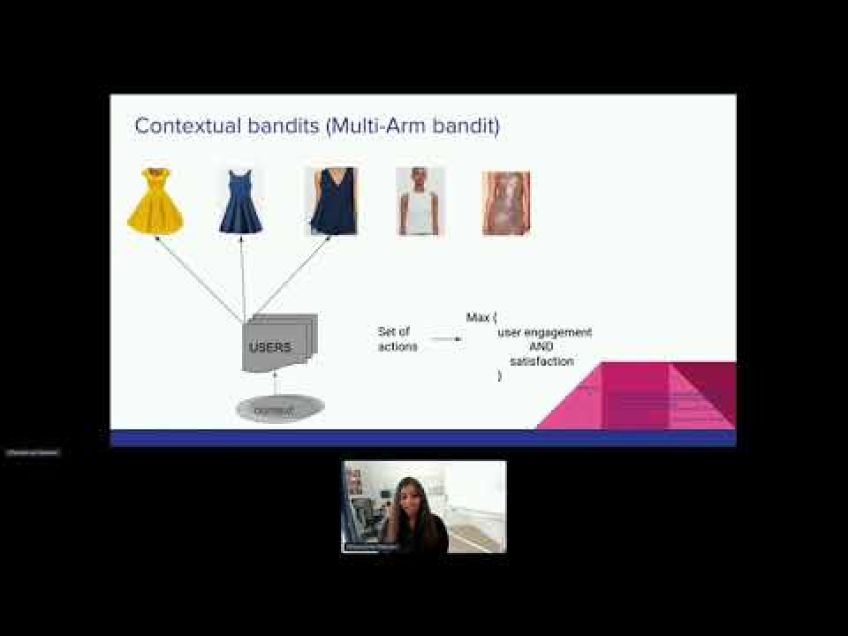Using insights to win people and solve problems
Reviews
Unlocking Solutions with Insights: Winning People and Solving Problems
With data and technology rapidly becoming the backbone of almost every business, it is imperative to take the time to fully understand the power of insights and how they can advance your strategy. I'm currently exploring insights for Buku Arun, a YC 20 company aiming to aid microbusinesses in Indonesia by promoting financial literacy and providing a financial platform for business growth.
My Journey with Data and Insights
While studying for a Master’s in Entrepreneurship, I recall a marketing class where we discussed the rivalry between Pepsi and Coca Cola. To my surprise, the class revolved around Excel sheets rather than branding strategies and customer voices. This was a turning point for me as I understood the integral role that data can play in even the most creative fields. Fast forward 5-6 years, I now appreciate the importance of using data insights to win people over and generate rich solutions.
The Ubiquity of Data
"Data is everywhere" is a mantra that I adhere to. Every action we take – from opening an app on our smartphones to taking a picture – generates data. To put it into perspective, we send around 16 million text messages, 1 million Tinder swipes, and 165 million emails every minute. By 2025, it is projected that we will generate 175 zettabytes of data (1 Zettabyte = 1 billion Terabytes).
Transforming Data into Insight
The challenge lies not in gathering data, but in converting this data into informative insights. Here is a six-step approach to help you navigate the process:
- Curiosity: Probe every aspect of the problem, from tiny details to the broader overview.
- Embrace Imperfection: Tolerating ambiguity and working with messy or incomplete data can often lead to innovative solutions.
- A Dragonfly Eye: View the problem through a multifaceted lens to gain a comprehensive understanding.
- Relentless Experimentation: Start with a hypothesis, then scrutinize the data to reach a conclusion.
- Collective Intelligence: Instead of relying on a single perspective, gather insights from different individuals for a more balanced view.
- Show and Tell: Storytelling is an effective way to explain insights, making it easier for individuals to understand and resonate with your findings.
Winning People with Insights
The value of insights is only realized when shared effectively with your team. To ensure this, remember the following:
- Perspective: Understand your own perspective and that of your audience.
- Know Your Audience: Understand what the audience is looking to learn from your insights.
- Outcome Not Output: Focus on the implications of your findings, not just the findings themselves.
- Challenge the norm: Don't be afraid to present an alternative theory.
- Ask For Help: Sometimes, seeking help is the best way to fully understand and solve a problem.
Indeed, problems are merely solutions waiting to be found. With a comprehensive understanding of data, you can create meaningful insights that will help you solve problems and win people over. Coupled with effective communication and a deep understanding of your audience, these insights can help you indeed make a recognizable difference.
Video Transcription
Let's get started. Um Today, I'll be talking about using insights to win people and solve problems. Uh Before I dig any deeper, I just wanted to quickly tell you why am I talking about this?And what's my relationship with insights, people, problem solving and how have I approached this till now? Um I'm presently looking at data for Buku Arun. Um We are a YC 20 company. We are solving for 60 million microbusinesses in Indonesia. We are trying to enable them to become financially um literate and give them a financial platform to operate and grow their business. Prior to this, I was working with Grab and Ovo. Um I was primarily looking at strategy and operations there uh by my education, I've done computer science engineering and I then did my master's in entrepreneurship. It's only in my journey with my entrepreneurship time. That's when I got associated with data, a lot more insights, a lot more problem solving. A lot more. I still remember I went with the idea that I would like to explore what the world of start up is, which is by being an academic student at heart. I went and studied there. Um I clearly remember this is 2015.
Um I was in a marketing class and we were talking about how Pepsi and Coca Cola have fought over their market share in different countries over a period of time for an engineering student who thinks about marketing. The first thing that would generally come to your head is a lot of branding, a lot of color themes, a lot of understanding the voice of your customer and uh nuances around it. But for my pleasant surprise, it was a class which was full of Excel shade. So that was a comfort zone, comfort zone for an engineer like me. And that's when I realized that, you know, even with the domain, which is so abstract and has so many creative layers to it, it still has data in it. And that's how my journey with data started where I figured out if I could understand how we can use this data to create insights and solve problems. Um That'll be, that'll make the world a much more meaningful place to be. And over the period of 5 to 6 years working I realized, OK, you understand data, you're able to generate insights. But if you're not able to win people with those insights, all of it sometimes goes to win. So today's conversation, I'd like to talk about the journey and the importance of what I have seen over a period of time. Enough said about all of this. Um something that my talk said. And I also strongly believe that data is everywhere.
Everything that we do today is data. If you open your app on your phone, that's data. If you try taking a picture, that's data. Um Since I've talked about insights, I wanted to share some mind-blowing insights when I encountered them, I was also pleasantly surprised we send 16 million text messages per minute. So as of right now, there are 16 million messages being exchanged between different people across the world.
There are 1 million Tinder swipes right now. Yes, during the pandemic, the world has become slightly more isolated. So Tinder is a go to place. But 1 million Tinder swipes per minute is a massive massive amount. We have 1 65 million emails being sent out per minute, which also includes promotional uh emails. But imagine the quantum of data that's being generated every minute. These are some facts which are in our daily life that we closely associate to and we see regularly and not realize this is the amount of data that we are generating. Uh what does this all account to? OK. We wake up with generating so much data. So as of now in the world, we have five Z bytes of data present as we speak. And this number is expected to go up to 175 zab bytes of data in 2025. That's massive amount of data just to give you a reference or some note fact one Z byte has 21 zeros. It's that crazy or that big number for us. Uh This is something I have been talking about a lot and I did mention earlier is that 90% of the world's data existing today didn't exist two years ago, which means in the last two years, we've been able to produce so much data.
We are tracking so much data, We are tracking every possible thing possible on earth right now. What does it mean for people like us? And you know, OK, there is so much data. What do we do? Um The critical part of all problems that are being solved is right now with data, the more data aware and data informed, we are the better decisions are made. Better problems are solved. But the challenge is that the data directly does not become a method of being able to create insights. We need to go through a journey of being able to create insights that is turning this data into an insight that is meaningful to all. So this is a nice um mental mindset of how do we think about creating insights? I generally go through all six in my usual life. Uh I would highly encourage everybody to maybe screenshot this or I might share the slides. It's a very ready to use template um Talking about each component while you're trying to create insights for a problem, you're solving. It's very, very important to be curious, not only for the problem but every small and big element of the problem, being able to go into absolute uh minute details to a bird's eye view while you're solving the problem and being curious about looking at it from every angle is extremely helpful.
Second, while you're trying to solve a massive problem, um sometimes being an imperfection does help, it does help with your tolerance with ambiguity. Because while solving problems, there is a lot of anarchy, there's a lot of um untidy data, unclean data unclear of where, where the problem pain points are. So somebody who can deal ambiguity really really helps. The third is having a dragonfly eye. Um As I said earlier, if you are able to think about your problem from a very micro lens to a macro lens, from turning the problem upside down to left to right, the way you're able to look at your problem and the multiple lenses you're able to look at your problem, the better understanding of your problem you would have and you'll be able to create a much better insight.
Uh Next is um pursuing relentless experimentation behavior. It's very important to be able to look at your data and on, you know, look at any form of problem that you're solving to be eventually able to experiment as much as you can before you create a solution. So a good art of doing this is and something that works a lot with me is that we go with a lot of hypothesis. Um You think about what's your underlying principle and once you have that underlying hypothesis or an idea, then you are able to look at it at a very detailed view. Next is collective intelligence. Um This is a very important thing while you're solving problems, your point of view itself is not enough to solve a problem. I think a point of view of everybody combined together is important. A very interesting component that I always talk about is Hippo's point of view, which is the highest person's point of view. Generally, most times in your problem solving or you are uh trying to look at uh creating in a lot of times your insights are biased by a Hippo's point of view. Generally, this could be a manager, your boss, your leader anywhere.
But if you go into details of your data, that might come to be a different insight, so it's really, really important to be able to look at collective intelligence but not always have a bias over there. Last is showing and telling um the world we live in. It's very easy to get distracted for now. I'm sure one of you must be looking at your phone and checking or replying to a whatsapp message. So it's very important to be able to tell a story that people understand and they re they resonate to and they're able to take an action, which takes me to the second part of my conversation that even if you have everything related uh in terms of data and insights, and you follow this entire process that you have understood your problem at every level.
And you've been able to create an amazing insight that inside to turn into a real time world action needs people, needs you to win. People, needs you to uh work together in harmony with people across functions. Sometimes these conversations are much more critical and much more hard as you would like them to be. But if you have insights and data, if you also learn the art of winning people and marry all the three, you are in a golden triangle of making sure that you are creating a value and impact, which is why I talk about more about pinning people while problem solving. We understand the problem. We are able to look at it from multiple angles. We go through the process of creating insights via data. Once we've done all of that, it's very important to empower your insights to people to make sure there is literacy and awareness of what you're trying to do. Um It's easy for engineers and it's very easy for folks uh especially people in stem to be able to understand numbers, to be able to understand an excel sheet, to be able to look at crazy quantum of data and come up with an insight just how important it is to create the insight.
It's equally important to get people to understand that insight and also to buy into that insight, which is what I call it, uh which is what I call the section for winning people. Uh perspective is everything. If you're able to understand your perspective and communicate it clearly, and you're able to understand your audience perspective or your stakeholders perspective and communicate, you are one step closer to winning that conversation as together as a team. Second is understanding your audience, I think it becomes really important to understand your audience because that's how your narrative and your conversation would change with time. The third is focus on the outcome and not output. It's very easy for the world of insights, especially to slip into the world of output. If somebody would ask you who's my top performer, you can easily make an Excel sheet and give it to them. But that does not answer the question. You've just made an output as a checklist item and said, I was asked a question, I produced some pivot table and I'm giving it out to people. It's, and in order for you to understand the outcome, it's very, very important to be able to look at the input also. And I also wanted to know uh why some of that I request or ask people is go ask the uh three Y triangle.
Uh The three Y circle really helps uh in terms of understanding those problems. Um, while you're problem solving, it's very easy to get over and, um, you, one can easily, um, get lost and while numbers are still easier, people become a little more difficult. Um, a good way or a good mindset is not to think about what's the worst that can happen. It's really, really important to start thinking about what's the best that can happen. If you change your mindset towards the problem, that's half the job itself. Um Why approaching all the first four topics or points are really amazing when you're approaching a one time conversation with someone. But when you already hit a roadblock and the conversation is not going anywhere and you know, you're not able to get a stakeholder to buy in.
Then I would say it's very interesting to go think about how can I turn this around? How can I make something more out of this? Um How do I make an alternative theory out of this? I think doing a lot of brainstorming of how can I still turn this around? Really helps and goes a really long way last. But least I think this is especially for this forum. I have personally seen women in my team uh would never ask for help. They would be soldiers or silent knights, how I like to call them. They would like to win the battle without asking for help. But um a sincere shout out there's nothing wrong in asking for help. Um It just shows that you're trying to solve the problem and you need this extra assistance. There's nothing that goes uh beyond it. There's something that I wanted everybody to leave with the thought that problems or solutions wanting to be found. And it's not rocket science if you learn to break them and go through the journey of looking at data, creating insights and solving problems and then winning people. I think that's a complete circle that comes through to make the life easy. And that has been really helpful in my mantra for how I operate in a very highly ambiguous, a high growth uh start up for last one year having said this, I'm open to questions if any, if you would like to find me on linkedin, that's my QR code.
Um And I'll drop the link to the slides, a publicly available link to the slides in a chat right away. Yes. OK. Here you go with the link. Sorry, my laptop's slightly slow. I don't know what's happening. Let me just share that link in a minute. Uh Hey, there you go. Any tips on imperfections when you are a perfectionist? Um I think, yeah, this is something that I struggled a lot with. I'm a stickler by nature. That's my strength thinking about process is what I do really well. Um And when I joined an early stage start up like uh Buku Warum, I was one of the early members and I have seen us grow till 150. Um I have two tips of this from being a perfectionist to being an imperfection is that uh one being able to take a step back and trust the process. Uh You are a perfectionist. You must have created a process, you must have spent that extra mile to write that document in the right form in the right color possible with the right steps written, it's important to be have that control on self. When you're able to take a step back and see how things observe. That's one. And second, I think being able to, when you do this, I would say do this with smaller uh tickets and then eventually evolve this as a practice for bigger tickets. Because it's really important.
I know you cannot make difficult uh projects, you can't do this in difficult projects, you can start small and then expand it to a bigger solution. Um While you are doing this a second thing that helps a lot is being able to identify the gap because once you start stepping back, you will be able to see slightly bigger picture. Once you're able to see a slightly bigger picture, you can identify where is it a person problem? Where is it a process problem or where is it both or neither a situational problem? And I think being able to do that and that level of awareness and thinking kinda helps in terms of uh going to that journey. Those are two things that have helped me. Uh I, I hope they help you too. Uh Next is I missed the first bit a little. How do you, how do you handle overcoming the hppov when you are a superior? Uh OK. It was point of view. Um OK, so I think uh this is a very good question and I have personally been through this journey for a long time. Um I think the hippo's point of view is something which all data professionals or anybody whose problem solving goes through.
Lucky are people who have data. So I would consider us extremely lucky uh that we have the power of creating insights. Um I think approach the conversation with a lot of clarity, a lot, approach the conversation with a lot of respect that you are trying to think about the bigger picture. For example, in our case, what I really appreciate in our team is if you are able to think about a bigger picture and in terms of thinking about your end customer, your end client. So even if there is a hippos point of view, it's OK to consider because either they come from that experience or they have that kind of visibility into the company. But it's always nice to go back with a detailed research to ask them with respect with context on if there is a different point of view and a different insight. Usually the conversation is harder, which is why I said uh winning people is important that you need to understand their perspective. Why are they giving you that point of view?
But uh if you con you go with confidence, go with your insights, understand their perspective, be respectful and I'm sure the conversation becomes easier. Not all the times this mantra works, but I would say 80 to 90% times it works. I have personally turned around a couple of conversations with this. OK. Um Next is how do you make sure you're not getting over and with people with your data but still getting the problem solved. Uh perspective. Uh Nisha, this is the biggest uh solution or one word answer I can say is perspective. When you take your insights and you take your data to some one, don't take an Excel sheet. Don't take uh fancy charts that only nerds or data people will understand. Always understand the language that your team speaks for the same insight. If I want to create, if I have to share it with a group of people who are data literate, I will show numbers, graphs and everything. If the same insight, I take it through my CEO, I would just give him a two line too long to read line two or TLDR kind of a thing where he could just understand the summary. So I think understanding your audience in depth and understanding um what are they looking for is an important part. And I would say spend a lot of time on storytelling. That's a second art.
If you're able to stitch a story with your data of your customer or your end uh user, that goes a long way. Last is uh I think we'll be up by time, but I'll take the last question, how can we handle if the other person does not get your perspective? Um There are different mental models to this. Um One is I think approaching the conversation with Amas context. And I think Netflix has this policy lead by context. Um I really like this cultural value that they have is whenever you're starting a conversation, irrespective of level, you are in irrespective of what you're doing. If you are the owner of the project or the conversation, you're leading it, the more context you can give to a person, the better it gets. That's number one, number two, go with as much insights that you can go into the conversation with. The number three, I would highly recommend in this whole journey is that learn to understand their perspective. Some, this is the most difficult part for a lot of folks when they're trying to understand uh other people's background. So um I would say learn to question them, ask them a lot, read their material, understand what's the business problem they're solving and understand how do they approach different conversations if you're able to do all the three. I think your pers their perspective is clear to you.
Then the next part becomes you explaining them. Because if you are able to understand their perspective, explaining yours is much more easier. I hope that answers your question. And having said that this is my linkedin link. If you guys have any questions, even after this, I have shared my slides. If you would miss them, I can share them privately. Too happy to take any questions. This was a lovely session. Thank you so much. I really love the kind of questions that was shared with me and uh have a good evening. Thank you so much.






No comments so far – be the first to share your thoughts!